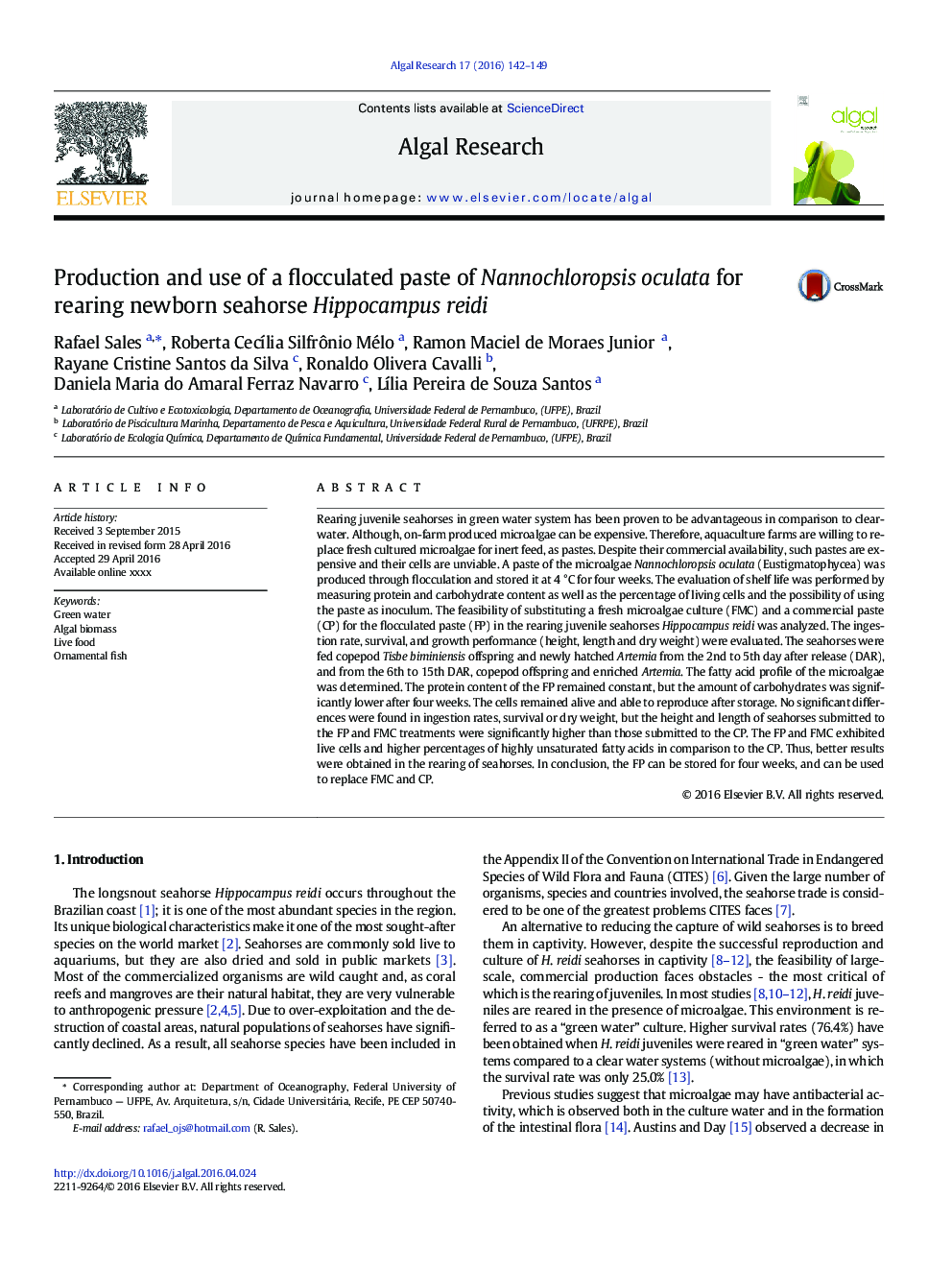| کد مقاله | کد نشریه | سال انتشار | مقاله انگلیسی | نسخه تمام متن |
|---|---|---|---|---|
| 8086961 | 1521815 | 2016 | 8 صفحه PDF | دانلود رایگان |
عنوان انگلیسی مقاله ISI
Production and use of a flocculated paste of Nannochloropsis oculata for rearing newborn seahorse Hippocampus reidi
دانلود مقاله + سفارش ترجمه
دانلود مقاله ISI انگلیسی
رایگان برای ایرانیان
کلمات کلیدی
موضوعات مرتبط
مهندسی و علوم پایه
مهندسی انرژی
انرژی های تجدید پذیر، توسعه پایدار و محیط زیست
پیش نمایش صفحه اول مقاله

چکیده انگلیسی
Rearing juvenile seahorses in green water system has been proven to be advantageous in comparison to clear-water. Although, on-farm produced microalgae can be expensive. Therefore, aquaculture farms are willing to replace fresh cultured microalgae for inert feed, as pastes. Despite their commercial availability, such pastes are expensive and their cells are unviable. A paste of the microalgae Nannochloropsis oculata (Eustigmatophycea) was produced through flocculation and stored it at 4 °C for four weeks. The evaluation of shelf life was performed by measuring protein and carbohydrate content as well as the percentage of living cells and the possibility of using the paste as inoculum. The feasibility of substituting a fresh microalgae culture (FMC) and a commercial paste (CP) for the flocculated paste (FP) in the rearing juvenile seahorses Hippocampus reidi was analyzed. The ingestion rate, survival, and growth performance (height, length and dry weight) were evaluated. The seahorses were fed copepod Tisbe biminiensis offspring and newly hatched Artemia from the 2nd to 5th day after release (DAR), and from the 6th to 15th DAR, copepod offspring and enriched Artemia. The fatty acid profile of the microalgae was determined. The protein content of the FP remained constant, but the amount of carbohydrates was significantly lower after four weeks. The cells remained alive and able to reproduce after storage. No significant differences were found in ingestion rates, survival or dry weight, but the height and length of seahorses submitted to the FP and FMC treatments were significantly higher than those submitted to the CP. The FP and FMC exhibited live cells and higher percentages of highly unsaturated fatty acids in comparison to the CP. Thus, better results were obtained in the rearing of seahorses. In conclusion, the FP can be stored for four weeks, and can be used to replace FMC and CP.
ناشر
Database: Elsevier - ScienceDirect (ساینس دایرکت)
Journal: Algal Research - Volume 17, July 2016, Pages 142-149
Journal: Algal Research - Volume 17, July 2016, Pages 142-149
نویسندگان
Rafael Sales, Roberta CecÃlia Silfrônio Mélo, Ramon Maciel Junior, Rayane Cristine Santos da Silva, Ronaldo Olivera Cavalli, Daniela Maria do Amaral Ferraz Navarro, LÃlia Pereira de Souza Santos,